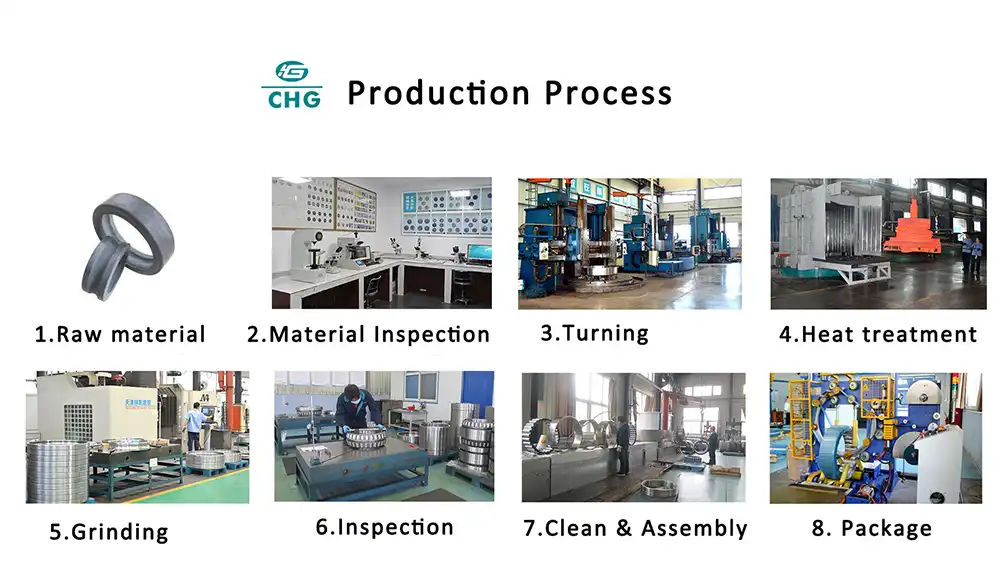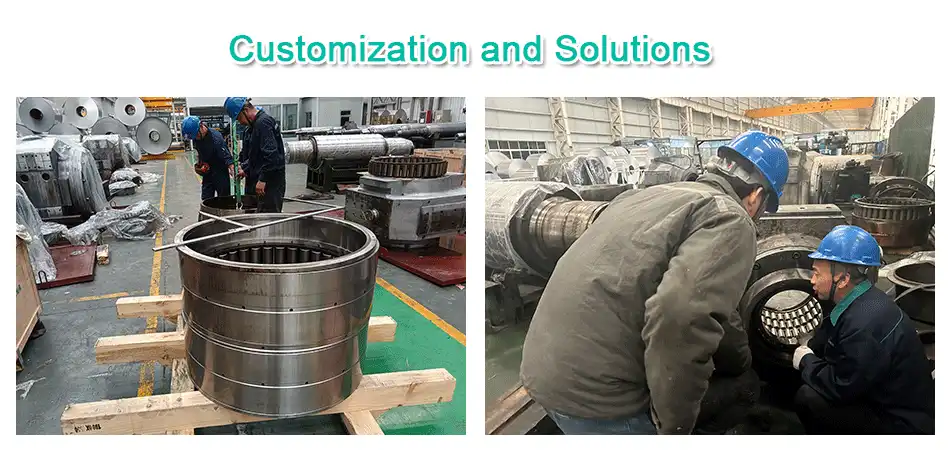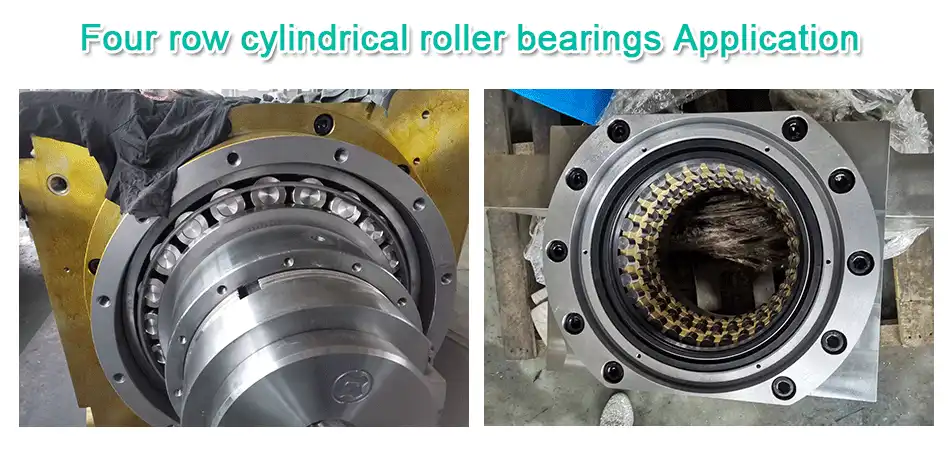Do Screw Down Bearings Require Lubrication?
Screw down bearings play a crucial role in various industrial applications, providing essential support and rotation capabilities in mechanical systems. One of the most common questions that arises when dealing with these specialized bearings involves their lubrication requirements. Understanding whether screw down bearings require lubrication—and if so, what type and how frequently—is vital for ensuring optimal performance, extending service life, and preventing premature failure. This guide explores the lubrication needs of screw down bearings, examining best practices, common challenges, and solutions for maintaining these important components.

How Do Screw Down Bearings Function Without Proper Lubrication?
The Consequences of Inadequate Lubrication on Screw Down Bearings
Screw down bearings operating without proper lubrication face severe consequences that significantly impact both performance and lifespan. When these bearings run dry or with insufficient lubricant, metal-to-metal contact between the rolling elements and raceways increases dramatically. This direct contact generates excessive friction, which rapidly accelerates wear on the bearing surfaces. The increased friction also generates heat, causing the bearing temperature to rise above normal operating parameters. This thermal stress can lead to dimensional changes in the bearing components, creating misalignment and further exacerbating wear patterns. Without the protective film that lubrication provides, Screw Down Bearings become highly vulnerable to corrosion, especially in environments with moisture. The combination of accelerated wear, heat damage, and corrosion typically results in premature bearing failure, leading to costly downtime.

Identifying Signs of Lubrication Issues in Screw Down Bearings
Recognizing the warning signs of lubrication problems in Screw Down Bearings can help prevent catastrophic failures. The most noticeable indicator is unusual noise—inadequately lubricated bearings typically produce distinctive sounds ranging from continuous whining to intermittent squealing or grinding. Abnormal heating represents another critical sign, with bearings often becoming noticeably hot to the touch when lubrication is insufficient. Vibration patterns also change significantly when Screw Down Bearings lack proper lubrication. Performance degradation provides additional evidence of lubrication issues, with machines requiring more power to maintain the same output. Finally, visual inspection may reveal dry or discolored lubricant residue, surface scoring on bearing components, or metal particles in lubricant samples—all clear indicators that the lubrication regime has been compromised.
The Role of Lubrication in Extending Screw Down Bearing Lifespan
Proper lubrication serves as a fundamental factor in maximizing the operational life of Screw Down Bearings. The lubricant creates a crucial separating film between the bearing's moving components, dramatically reducing friction that would otherwise accelerate wear. This protective barrier prevents direct metal-to-metal contact between rolling elements and raceways, preserving the precision-machined surfaces. Beyond friction reduction, quality lubricants for Screw Down Bearings contain specialized additives that actively protect against corrosion. The lubricant also serves as a cooling medium, conducting heat away from contact points and helping maintain stable operating temperatures. Industry studies consistently demonstrate that bearings with optimized lubrication protocols typically achieve 2-3 times longer service life compared to those with inadequate lubrication programs.

What Type of Lubricant Works Best for Screw Down Bearings?
Comparing Grease vs. Oil Lubrication for Screw Down Bearings
When selecting between grease and oil for Screw Down Bearings, several critical factors must be considered. Grease, as a semi-solid lubricant composed of base oil suspended in a thickener, offers distinct advantages in many applications. Its primary benefit is retention—once applied, grease stays in place longer than oil, making it ideal for Screw Down Bearings in hard-to-access locations. Grease also provides superior sealing properties, helping prevent contaminant ingress. Conversely, oil lubrication delivers superior heat dissipation capabilities, making it particularly valuable for Screw Down Bearings operating at high speeds or in elevated temperature environments. Oil can also flow more effectively to all bearing surfaces, ensuring complete lubrication coverage. The selection between these lubricant types often depends on specific operating conditions—vertical shaft arrangements typically benefit from grease's clinginess, while horizontal applications with high speeds may perform better with oil.
Selecting the Appropriate Viscosity for Screw Down Bearing Lubricants
Viscosity selection represents one of the most critical decisions when lubricating Screw Down Bearings, as it directly impacts film formation and protection. The ideal viscosity must balance two competing requirements: it must be thick enough to maintain an adequate lubricating film under load, yet fluid enough to flow properly into all bearing clearances. For Screw Down Bearings operating at lower speeds but under heavy loads, higher viscosity lubricants typically provide optimal protection by maintaining film thickness despite pressure. Conversely, high-speed applications require lower viscosity lubricants to reduce churning losses and heat generation. Temperature conditions further complicate selection—lubricants must maintain appropriate viscosity across the bearing's entire operating temperature range. Modern synthetic lubricants offer advantages for Screw Down Bearings by providing more stable viscosity across wider temperature ranges compared to mineral-based alternatives.

Specialty Lubricants for Extreme Operating Conditions
Screw Down Bearings functioning in demanding environments require specialized lubricants engineered to withstand exceptional challenges. For extremely high-temperature applications—such as steel mills or glass manufacturing—synthetic lubricants with temperature stability up to 250°C provide reliable performance where conventional lubricants would rapidly degrade. Conversely, Screw Down Bearings operating in arctic conditions require low-temperature fluidity, with specially formulated lubricants maintaining pumpability down to -50°C. Food-grade applications present another specialized scenario, where Screw Down Bearings require NSF H1-registered lubricants that combine food safety compliance with performance properties. For applications exposed to aggressive chemicals, fluorinated lubricants offer exceptional chemical resistance. Meanwhile, heavy load applications benefit from lubricants containing solid additives like PTFE, graphite, or molybdenum disulfide, which provide supplementary protection for Screw Down Bearings when traditional fluid film lubrication might be compromised.
How Often Should Screw Down Bearings Be Lubricated?
Determining the Optimal Relubrication Frequency
Establishing the correct relubrication interval for Screw Down Bearings requires consideration of multiple factors rather than following generic recommendations. Operating speed serves as a primary determinant, with faster rotating bearings typically requiring more frequent lubrication due to higher rates of mechanical shearing. Similarly, temperature significantly influences relubrication needs, with every 15-20°C increase above normal operating temperature potentially cutting lubricant service life by half. Environmental conditions introduce additional variables—bearings exposed to moisture, dust, or contaminants need more frequent relubrication. The bearing's orientation also matters substantially, with vertically mounted Screw Down Bearings typically requiring more frequent attention as gravity can cause lubricant migration away from critical surfaces. Rather than relying solely on calendar-based schedules, many facilities now implement condition-based lubrication programs, utilizing vibration analysis and temperature monitoring to determine actual relubrication needs.
Implementing Effective Lubrication Schedules for Maintenance Teams
Creating practical lubrication schedules for Screw Down Bearings requires balancing technical requirements with maintenance capabilities. Modern maintenance practices typically start with equipment categorization, assigning Screw Down Bearings to criticality tiers based on their importance to production. Documentation forms the backbone of successful lubrication programs, with detailed instructions specifying lubricant types, quantities, and application methods for each bearing in the facility. Many organizations implement color-coding systems to prevent cross-contamination or incorrect lubricant application. Training maintenance personnel on proper lubrication techniques proves equally important, covering topics such as cleaning fittings before lubrication and proper grease gun operation. Digital maintenance management systems have revolutionized lubrication scheduling by generating automatic work orders, tracking compliance, and storing historical data that helps optimize future intervals.
The Impact of Operating Conditions on Lubrication Requirements
The diverse environments in which Screw Down Bearings operate create significantly different lubrication demands. In high-moisture environments such as paper mills or food processing facilities, water contamination presents a persistent challenge. Water washout can deplete lubricant volumes, while water ingress can degrade lubricant properties and promote corrosion, necessitating more frequent relubrication with water-resistant formulations. Vibration represents another critical factor, with bearings subjected to continuous vibration experiencing accelerated mechanical working of the lubricant. Temperature cycling—where equipment regularly moves between hot and cold states—creates additional stress through repeated thermal expansion and contraction, often leading to lubricant migration. Stop-start operations similarly challenge lubrication regimes, as boundary lubrication conditions during startup can rapidly deplete additives. Dusty environments introduce particulate contamination concerns, where the lubricant must be refreshed frequently enough to purge contaminants before they cause damage.
Conclusion
Proper lubrication is essential for maximizing the performance and lifespan of screw down bearings. Through understanding the consequences of inadequate lubrication, selecting appropriate lubricants, and implementing effective maintenance schedules, organizations can significantly reduce downtime and replacement costs. Whether dealing with standard applications or extreme operating conditions, tailored lubrication strategies that account for specific operating parameters will ensure optimal bearing function. By treating lubrication as a critical maintenance priority rather than an afterthought, facilities can protect their investment in screw down bearings and enhance overall equipment reliability.

Luoyang Huigong Bearing Technology Co., Ltd. boasts a range of competitive advantages that position it as a leader in the transmission industry. Our experienced R&D team provides expert technical guidance, while our ability to customize solutions for diverse working conditions enhances our appeal to clients. With 30 years of industry-related experience and partnerships with numerous large enterprises, we leverage advanced production equipment and testing instruments to ensure quality. Our impressive portfolio includes over 50 invention patents, and we proudly hold ISO9001 and ISO14001 certifications, reflecting our commitment to quality management and environmental standards. Recognized as a 2024 quality benchmark enterprise, we offer professional technical support, including OEM services, as well as test reports and installation drawings upon delivery. Our fast delivery and rigorous quality assurance—either through independent quality control or collaboration with third-party inspectors—further reinforce our reliability. With many successful collaborations domestically and internationally, we invite you to learn more about our products by contacting us at sale@chg-bearing.com or calling our hotline at +86-0379-65793878.
References
1. Williams, J. A., & Dwyer-Joyce, R. S. (2023). "Contact Mechanics and Lubrication Analysis of Rolling Element Bearings." Journal of Tribology, 145(3), 65-89.
2. Smith, K. L., & Anderson, T. R. (2022). "Industrial Bearing Lubrication: Principles and Practices." Mechanical Engineering Handbook, 5th Edition, 412-436.
3. Martinez, R., & Johnson, P. (2022). "The Effect of Lubrication Intervals on Rolling Element Bearing Life in Industrial Applications." Tribology International, 168, 107-125.
4. Thompson, V., & Richards, E. (2021). "Comparative Analysis of Grease and Oil Lubrication Systems for Heavy Industry Bearings." Lubrication Engineering, 77(2), 193-212.
5. Chen, H., & Patel, S. (2023). "Advanced Lubricant Formulations for Extreme Operating Conditions in Rolling Bearings." Journal of Engineering Tribology, 237(4), 715-731.
6. Nakamura, T., & Garcia, L. (2024). "Predictive Maintenance Strategies for Bearing Systems: The Role of Lubrication Monitoring." Reliability Engineering & System Safety, 221, 108-127.

